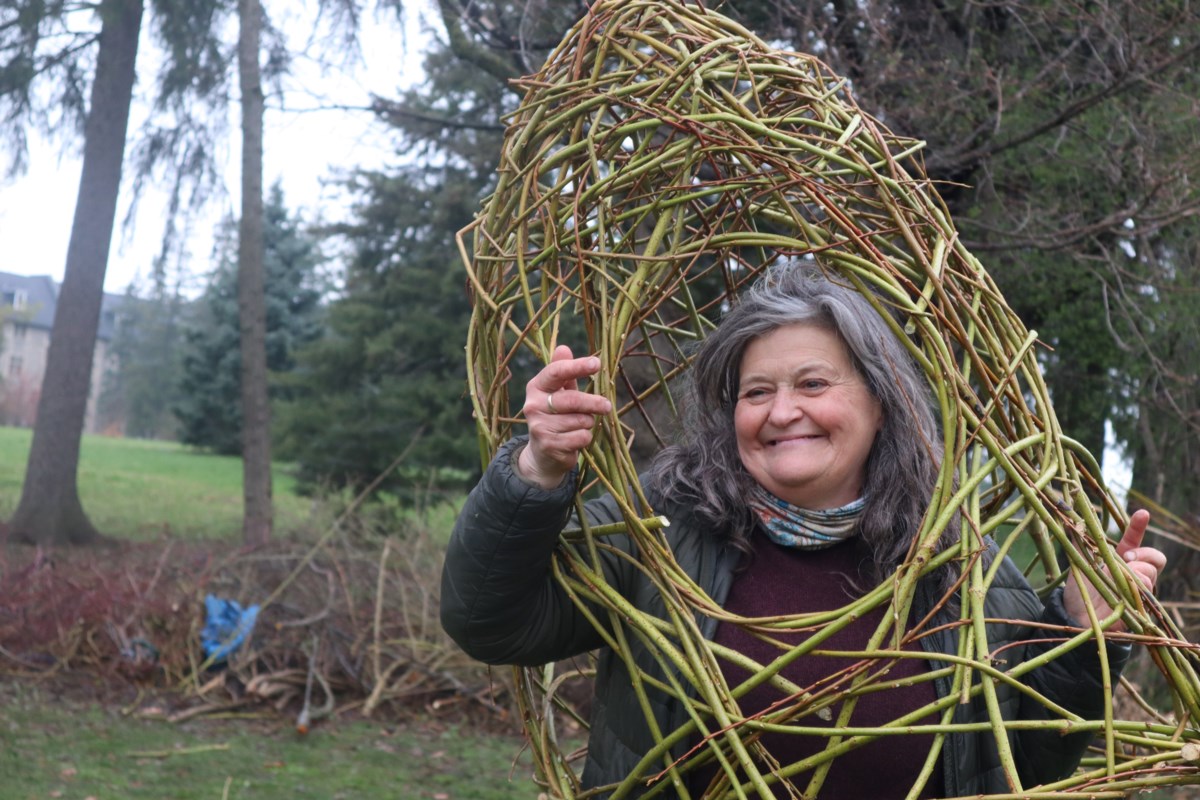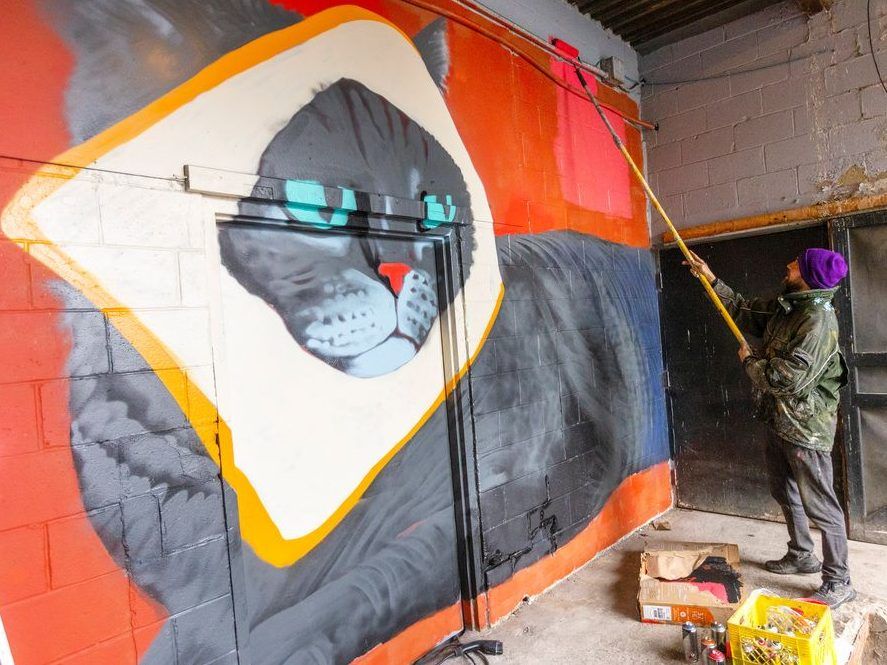:format(webp)/https://www.therecord.com/content/dam/therecord/life/2022/05/21/this-old-thing-striking-portrait-by-canadian-artist-and-art-teacher/philosopher_portrait_painting.jpg)
Art
This Old Thing: Striking portrait by Canadian artist and art teacher – Waterloo Region Record
A. Adam Sherriff Scott (1887-1980) was born in Scotland. His initial studies included the Edinburgh School of Art and the Slade School of Art in London. With his arrival in Montreal in 1912, his career blossomed. He captured much of life in Canada with landscapes, genre scenes and portraits of all kinds. This often included winter scenes, Indigenous cultures, cityscapes, still lifes and interiors. Much of his portfolio was exhibited with the Art Association of Montreal and the Royal Canadian Academy of Arts. He also made a great contribution, teaching art and opening up his own school in Montreal. This striking portrait was painted circa the late 1940s or early 1950s. It certainly invokes deep thought. It is worth $750 today.
Q. I inherited this pair of 29-cm-high (11.5 inches) vases from my great-grandmother. They were a wedding gift and she was married in 1890 in New Glasgow, N.S. They have no cracks or chips. There are some painted underside markings. I would be delighted if you consider these for your newspaper column.
A. The 1895 Montgomery Ward & Co. of Chicago advertised your vases as “made of Bohemian glass of a milky white colour and beautifully decorated. This makes a handsome ornament, and would be appreciated as a wedding or birthday gift. There is nothing nicer to give as a holiday present.” The vases were offered individually for 27 cents or the pair for 50 cents — a saving of four cents that, at the time would buy either a loaf of bread or a half-pound (225-gram) rib roast. Bohemia harboured some of the major glass-making centres of Europe. The markings on the base are those of the artist. Your vases are hand-blown opal glass. The hand-painted fruit, flowers and foliage might represent a member of the nightshade plant family, which includes plants used for ornament, food or even drugs. Your stately pair is worth $125.
Q. I have this blue glass lamp I found in the basement of an old house. It is 24 cm tall and 16.5 cm wide (9.5 by 6.5 inches). The house owner said it had been in her family since before hydro came in. I am wondering what you might know about the lamp and its value.
A. You have a kerosene oil lamp in one of the most popular selling patterns of its time — “Princess Feather.” It was made primarily by the Consolidated Lamp and Glass Company in Coraopolis, Penn., from 1894 to 1900. The lamp is found in clear glass and several colours — sometimes just the founts (the oil reservoir) are in colour. But cobalt blue, as in your example was, by far the most popular colour sold. The proportions of your lamp are distinctive of the “sewing” size, which holds the largest amount of oil of any in the several sizes in which this pattern was produced. Originally, it was sold complete with a chimney for less than one dollar. It is one of the most elaborate patterns in glass stand lamps of this era. “Princess Feather” is still quite popular in this colour and it is very difficult to find examples that are free of chips since the foot edges are quite prone. It is worth $250 today.
Art
Collaborative art project highlights the artistic and healing properties of trees – GuelphToday


Combining nature, art and science came to fruition with a collaborative stick weaving project today.
At the How To Draw A Tree Wellness Circle on Johnston Green at the University of Guelph, people were welcomed to join artists Dawn Matheson and Agnes Niewiadomski to create a sculpture made out of sticks.
Trees saved Matheson’s life. She has her own challenges with mental health but being with trees in nature relaxes her and calms her mind.
“It’s just a practice I’ve developed. It grounds me,” she said.
She wanted to bring a bit about what fuels her creativity and helps her mental health to the public with this art project.
The process of the sculpture will continue to unravel in the next couple of weeks as people add sticks to it. About 50 people came out to the event on Wednesday.
Eventually the sculpture will be used as a set piece for a play put on by Guelph Collegiate Vocational Institute (GCVI) students.
“Our idea is always like, challenge yourself to try something that you’re not used to,” said Gerard Gouchro, teacher and minor head of arts at GCVI. Students came to help create pieces of art as part of the sculpture.
The project stemmed from an idea to get people engaged with the wellness circle. An art project called How To Draw A Tree was created by Matheson four years ago. Although the project is finished she hopes people will still engage with it.
The team behind the project is a mix of artists, sound composers, students, poets, ecopsychologists and more. They created sound walks. People can go through a guided tour in the Arboretum while listening to artists talk about their relationship to trees.
There are four guided sound walks onsite and each person has a tree planted at the wellness circle that they connected with while working on the project.
The stick sculpture will be a work in progress. There will be a sign that reads anyone is welcome to add a stick to the sculpture. “It’ll become a true process based community sculpture, maybe it’ll get destroyed, which is fine by me. I’m a process based artist, there’s no final product,” said Matheson.
Most of the materials used for stick weaving are sticks from trees in the Arboretum that were pruned in the winter. Instead of the material being put into a chipper “this was a great opportunity to share it here for this project,” said Justine Richardson, director of the Arboretum.
Matheson hoped with minimal instruction people felt free to add sticks to the sculpture wherever they saw fit.
“It’s just kind of come alive to see everyone’s contributions. I’m really impressed,” said Niewiadomski.
Trees are the ultimate improvisers; they move wherever the sun is, said Matheson. Trees are good listeners and you can’t experience a lot of rejection from them.
“There’s two parallel crises that are the biggest crisis in the world right now. And that’s mental illness and climate crisis,” she said. This is what the project is about.
There will be researchers from the U of G who will be studying the art project and will give feedback to see how beneficial creating a connection between people and the earth is.
The question that runs through Matheson’s mind is; how do we glean life and creativity from trees but also give back to nature?
The art piece will be up for the next couple of weeks on Johnston Green and people can contribute by adding in their own sticks.
Art
PHOTOS: 'Urban art advocates' brighten up London with public murals – The London Free Press


THIS CONTENT IS RESERVED FOR SUBSCRIBERS ONLY
Subscribe now to read the latest news in your city and across Canada.
- Exclusive articles from Ryan Pyette, Dale Carruthers, Jane Sims, Norman De Bono and others. Plus, the Noon News Roundup newsletter on weekdays and the LFP Weekender newsletter on weekends.
- Unlimited online access to London Free Press and 15 news sites with one account.
- London Free Press ePaper, an electronic replica of the print edition to view on any device, share and comment on.
- Daily puzzles, including the New York Times Crossword.
- Support local journalism.
SUBSCRIBE TO UNLOCK MORE ARTICLES
Subscribe now to read the latest news in your city and across Canada.
- Exclusive articles from Ryan Pyette, Dale Carruthers, Jane Sims, Norman De Bono and others. Plus, the Noon News Roundup newsletter on weekdays and the LFP Weekender newsletter on weekends.
- Unlimited online access to London Free Press and 15 news sites with one account.
- London Free Press ePaper, an electronic replica of the print edition to view on any device, share and comment on.
- Daily puzzles, including the New York Times Crossword.
- Support local journalism.
REGISTER / SIGN IN TO UNLOCK MORE ARTICLES
Create an account or sign in to continue with your reading experience.
- Access articles from across Canada with one account.
- Share your thoughts and join the conversation in the comments.
- Enjoy additional articles per month.
- Get email updates from your favourite authors.
Art
Squatters at Gordon Ramsay's Pub Have 'Left the Building' After Turning It Into an Art Café – PEOPLE
:max_bytes(150000):strip_icc():focal(749x0:751x2)/gordon-ramsey-tout-3-091423-e37ac7b907264ee4b9f80a5767133502.jpg)
:max_bytes(150000):strip_icc():focal(749x0:751x2)/gordon-ramsey-tout-3-091423-e37ac7b907264ee4b9f80a5767133502.jpg)
Squatters occupying one of Gordon Ramsay’s London pubs have vacated the property, one week after police were made aware of their activity.
The Camden Art Cafe, an “autonomous cafe” who had identified themselves as the occupants of the celebrity chef’s York & Albany pub, shared the news in an Instagram post.
“We are sad to announce Camden art collective have left the building after being served papers yesterday,” the post read. “We wish those left in the building the best of luck in their endeavours. We hope to be a part of the community again soon, watch this space!!”
The account did not specify who is left in the building, and London’s Metropolitan Police could not immediately be reached by PEOPLE for comment.
On April 13, BBC reported that the Central London pub had been occupied by at least six people, who allegedly boarded the windows. PEOPLE confirmed on April 15 that Ramsay’s pub had been occupied by squatters.
Ray Tang/Shutterstock
The building where York & Albany was located and rented by Ramsay was listed on the market for £13 million, or about $16 million U.S. dollars, in December.
The Camden Art Cafe spoke about the price when they shared an official statement on April 15 about occupying the building.
“We aim to open our doors regularly to anyone and everyone, particularly the people of Camden who have been victims of gentrification and parasitic projects like HS2,” the statement said, adding that they will provide free food and “space to display their art without the ridiculous red-tape that galleries require people to jump over.”
The post continued, talking about how the wealth disparities in Camden made it “fitting that £13 million properties that most locals would never be able to afford to visit should be opened up to all.”
On April 15, the Metropolitan Police told PEOPLE that they were made aware of the squatters at a “disused property” near London’s Regent’s Park on April 10.
“This is a civil matter and so police did not attend as an emergency call out,” the statement continued.
In the statement, the police said they would get involved if necessary: “We [are] in the process of identifying if any subsequent offences [sic] have occurred, and will take action where appropriate.”
Ramsay’s team declined to comment on the situation since it is being handled legally.
According to the U.K.’s official squatter rules on the government website, “Simply being on another person’s non-residential property without their permission is not usually a crime.”
But the website lists vandalization, not leaving when ordered by the court and using utilities as crimes that would permit police involvement.
-



 Sports23 hours ago
Sports23 hours agoTeam Canada’s Olympics looks designed by Lululemon
-



 Tech15 hours ago
Tech15 hours agoiPhone 15 Pro Desperado Mafia model launched at over ₹6.5 lakh- All details about this luxury iPhone from Caviar – HT Tech
-
Business22 hours ago
Firefighters battle wildfire near Edson, Alta., after natural gas line rupture – CBC.ca
-



 Sports15 hours ago
Sports15 hours agoLululemon unveils Canada's official Olympic kit for the Paris games – National Post
-



 Investment23 hours ago
Investment23 hours agoWall Street bosses cheer investment banking gains but stay cautious
-



 Politics21 hours ago
Politics21 hours agoTrump gave MAGA politicians permission to move left on abortion. Some are taking it. – Semafor
-
Politics24 hours ago
Trump trial updates: Defense argues juror bias from Facebook posts; unfit for hush money case jury
-



 Science18 hours ago
Science18 hours agoAstronomers discover Milky Way's heaviest known black hole – Xinhua


:format(webp)/https://www.therecord.com/content/dam/therecord/life/2022/05/21/this-old-thing-striking-portrait-by-canadian-artist-and-art-teacher/bohemian_opal_glass_vases.jpg)
:format(webp)/https://www.therecord.com/content/dam/therecord/life/2022/05/21/this-old-thing-striking-portrait-by-canadian-artist-and-art-teacher/princess_feather_oil_lamp.jpg)




